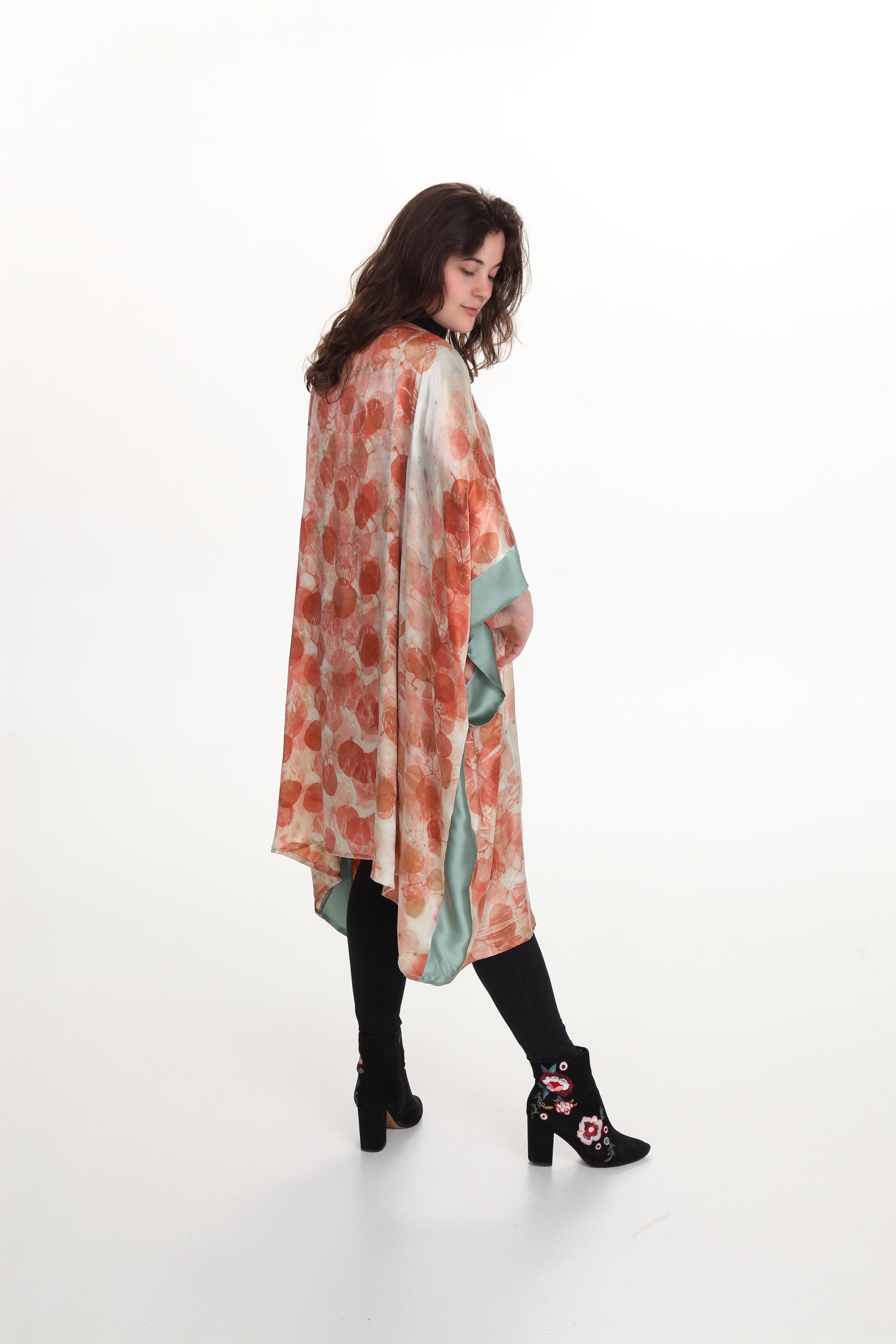About Eco dyed fabric
I use leaves, plants and other naturally occurring material that is known to transmit pigment onto fabric. Primarily, I use silk fabric. I use this because of its wonderful feel, drape and comfort. Also, because silk avidly accepts the natural dye. I pattern leaves or other natural materials onto the white silk blank. This is then rolled onto a large copper roller and steamed for 5-6 hours. To get varying background colors, I may use Marigold, Camomille or Indigo leaves in varying combinations to overdye the patterned silk. This produces a unique, colorfast, washable textile of quality and richness.
There’s something special about using plants to dye your own fabric. It connects you to the process of designing your own clothes and home goods in a way that gives you more respect and curiosity for the materials used and the process itself.
Nancy Potek: Why Do I Create?
Throughout her career as an artist, Nancy Potek has been deeply inspired by nature - its beauty, power and fragility. Early in her career in art, her curiosity led her to explore themes of flexibility and strength. This brought her to the medium of clay and, from there, to glass. When she transitioned to work with glass, Nancy was influenced by the way humans yoke nature for their own benefit and its resulting impact. She represented the dual components of both the delicacy and renewal of our natural environment through a medium that is simultaneously able to be shaped by humans but can easily be destroyed if not cared for, or melted down to create anew. She was one of the earliest proponents of using unconventional recycled objects and was inspired by the farms dotting the landscape of the rural town where she lived.
Her curiosity around the interplay of flexibility and strength progressed. She began studying textiles with Walter Nottingham. He introduced her to the techniques of paper-making. From there, she transitioned to the sturdy and flowing medium of textiles.
Nancy has focused her work on objects that enhance a direct connection to nature through the medium of wearable art. Her earlier work often featured dark themes surrounding the environment and human nature. Her current approach presents a more jubilant mood and an elevation of the beauty that can be harnessed in communion with nature. For her hand dyed silks, Nancy collects flowers, twigs, leaves and other offerings from nature that contain the dense tones of tannins. These can be coached to leave their marks on natural fabrics such as silk, cotton and wool. She uses a process of natural ingredients such as steam, vinegar and naturally occurring metals such as copper to create a permanent imprint that is a moment in time celebrating the natural environment.
Her work has been showcased at various galleries and museums throughout the country including the Minnesota Art Institute. In July of 2021, she submitted a natural hand-dyed kimono-like garment titled “The Raven” to the Second Biennale of Natural Dyes Contemporary Art and Design Exhibition. Her work was purchased to be part of the permanent collection of the China National Silk Museum in Hangzhou, China. This was one of the few garments submitted from around the world that received this honor.
**************************************
A word about KANGAS
Kangas are light-weight cotton fabrics that are machine printed. These textiles are designed, often, by anonymous African women, and then machine printed in Holland, India, Thailand or Indonesia. They are light-weight to reflect their primary use as garments to be worn in equatorial Africa.
The examples featured here were obtained on a trip to Tanzania. They were purchased in the textile markets of Dar Es Salaam and Zanzibar Town.
They are famous for their fabulous designs and colors. The fabric can be used for any cotton textile project.
Prices based on $15 per yard-length
“The quality of the fabric is so soft and natural. You can tell how unique each piece is and that makes every item she creates even more special.”






